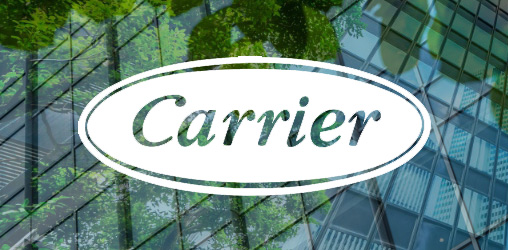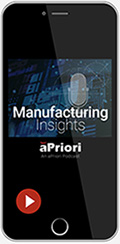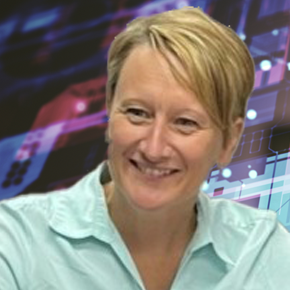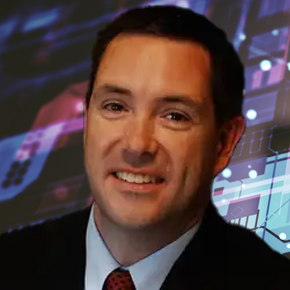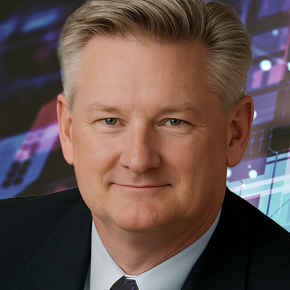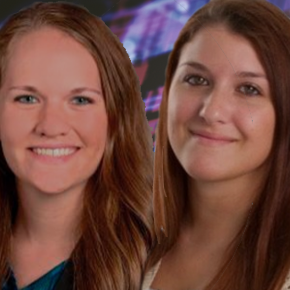May 15, 2023
What’s New with PTC Creo

Transcript
Did you know that if you’re a design engineer making 3D CAD models in CREO, you can get insight at your fingertips into the cost, carbon, and manufacturability of the products you’re designing?
New for PTC Creo – DFM, DTC, and CO2
What’s new in PTC Creo, thanks to aPriori, are enhancements to your design software wherein 3D CAD modeling proceeds as normal, and aPriori’s app in the background analyzes the product design for potential problems with manufacturability, cost, and sustainability. This analysis occurs at normal check-in points in the product development lifecycle, and also in real time, via Creo simulation live.
To learn more about how aPriori works with Creo9 and Creo10 to deliver enhanced functionality, I interviewed a pro/engineer about the usability of Creo design using aPriori’s optimized CAD software functionality.
Tristan Abend is the manager of the value engineering team at Carrier. He’s been using aP Generate to automate the task of getting DFM, DTC, and CO2 feedback to his design engineers working in Creo for 3D modeling. He took on this new initiative he took on after he saw how much aPriori saved him on the VAVE side – $24 million dollars in the first year alone.
I started our conversation by asking Tristan how aPriori fits into his value engineering initiatives, and how he sees the collaboration between design engineering and cost engineering working in real time.
Tristan Abend: Currently, we have 150 users worldwide using aPriori, both in design engineering, value engineering, as well as in supply chain for pricing. This is a global deployment, meaning that it is led out of our central engineering team headed by myself. What we are trying to do is get this tool in the hands of the users that need it the most.
When it comes to design engineers, it’s all about trying to find the best use case for them, something that is conducive to their current environment as far as how they design parts and how those parts translate into real-world products. That’s where we see aPriori really making the biggest play in working within current computer-aided design formats.
It’s all about optimization of the current workflow. Generative design at late-stage cost modeling is not soon enough. At that point you are at the design freeze. You are concluded. You’re really now trying to get the product into the hands of the users. We want to move solid modeling earlier in the product design lifecycle, where it can really make a difference on usability and pricing.
That’s where design packages become important. And when it comes to aPriori and PTC Windchill, what we would like to do is make the optimization process as automated as possible. aPriori helps us get visualization on the early product development that our design engineers are doing. aPriori itself is the leader as far as providing cost insight in the hands of these engineers. $24 million is what we found in potential value from our analyses in 2022.
$24 Million Savings with Design Software Optimization
Leah Archibald: $24 million savings in a year is not bad. Is that about what you expected? Is it more than you expected?
Tristan Abend: No, I think this was really ambitious for us. Personally, I would not have expected us to succeed as well as we did.
Leah Archibald: What was surprising? I mean, in terms of optimization, were there any places that you found savings where you didn’t expect to find savings in those parts or those assemblies?
Tristan Abend: I think the most surprising aspect was some of the design engineering cases. Some of the cost avoidance that we found, happened working on prototypes with these teams directly in the field. We were able to look at their multibody designs and actually work in the laboratories themselves as they were testing these units. Through the 3D CAD Software, without even getting the prototype in hand we were able to simulate design changes in aPriori and see what the ramifications of those would be on price and usability.
Leah Archibald: Let’s talk about the integration between aPriori and PTC Creo.
Tristan Abend: We at Carrier use Windchill as our main PLM system around the world. And when it comes to design engineers, what we found out early on as we were deploying aPriori is that we need an automated solution in order to get the most out of the tool in the hands of these designers. So aPriori approached us with a solution — integrating aPriori directly in Windchill. That way, when design engineers check these parts into Windchill, they get automated costing and usability feedback almost instantaneously. As well as getting manufacturability knowledge, they also get sustainability knowledge utilizing this simple workflow.
Leah Archibald: I know there are two ways for design engineers to get realtime insights on cost, manufacturability, and sustainability. One way is the Windchill automation you just described, where you integrate aPriori with Windchill so that whenever you check in part to your PLM, it’s automatically sending you an email about the DFM, DTC and CO2 rating. That’s the automated way. The real-time optimization method is when you’re working in CREO, you can click on the aPriori plugin app to see the insights right there. Do you see one or the other having more uptake with your design engineers?
Tristan Abend: I know a lot of our design engineers really like that plugin feature. A lot of them do utilize it every day. But honestly, I foresee more uptick going to happen in the Windchill integration only because a lot of the design engineers already use Windchill for PLM. As they’re doing their 3D modeling in CREO 9 or CREO 10, they are not going to notice the aPriori app at first, but they’ll start to see the value when they get an email with DFM, DTC, and CO2 insights.
Leah Archibald: That’s nice for design engineers — it’s an alert that comes up in their normal workflow.
Tristan Abend: Yeah, and you know, the other cool thing about this integration, at least from our end, is the custom aspect of it. Working with the aPriori team, with their own PTC experience, seeing the Windchill tool and knowing what we can do has been amazing. The different workflows that we’ve been able to create out of it have been surprising enhancements.
Leah Archibald: So tell me a little bit more about working with the aPriori team for the customization. Did you find that these are folks who know what they’re doing when it comes to PTC products?
Tristan Abend: Oh, most certainly. I mean, they know way more than I thought I knew. For me personally, it’s been great. Just having the team in there working with us, understanding what our constraints are and coming right back to us with the custom code ready to go — not only that, but creating code that is executable in less than four minutes. For those working constantly in PTC CREO for 3D CAD, you understand what a headache it is to have Windchill down for any amount of time. So the more that we can minimize that and automate in realtime, the better it is. And aPriori came to us with a great solution for it.
Leah Archibald: Well, Tristan, this is such a pleasure talking to you. Thank you so much.
